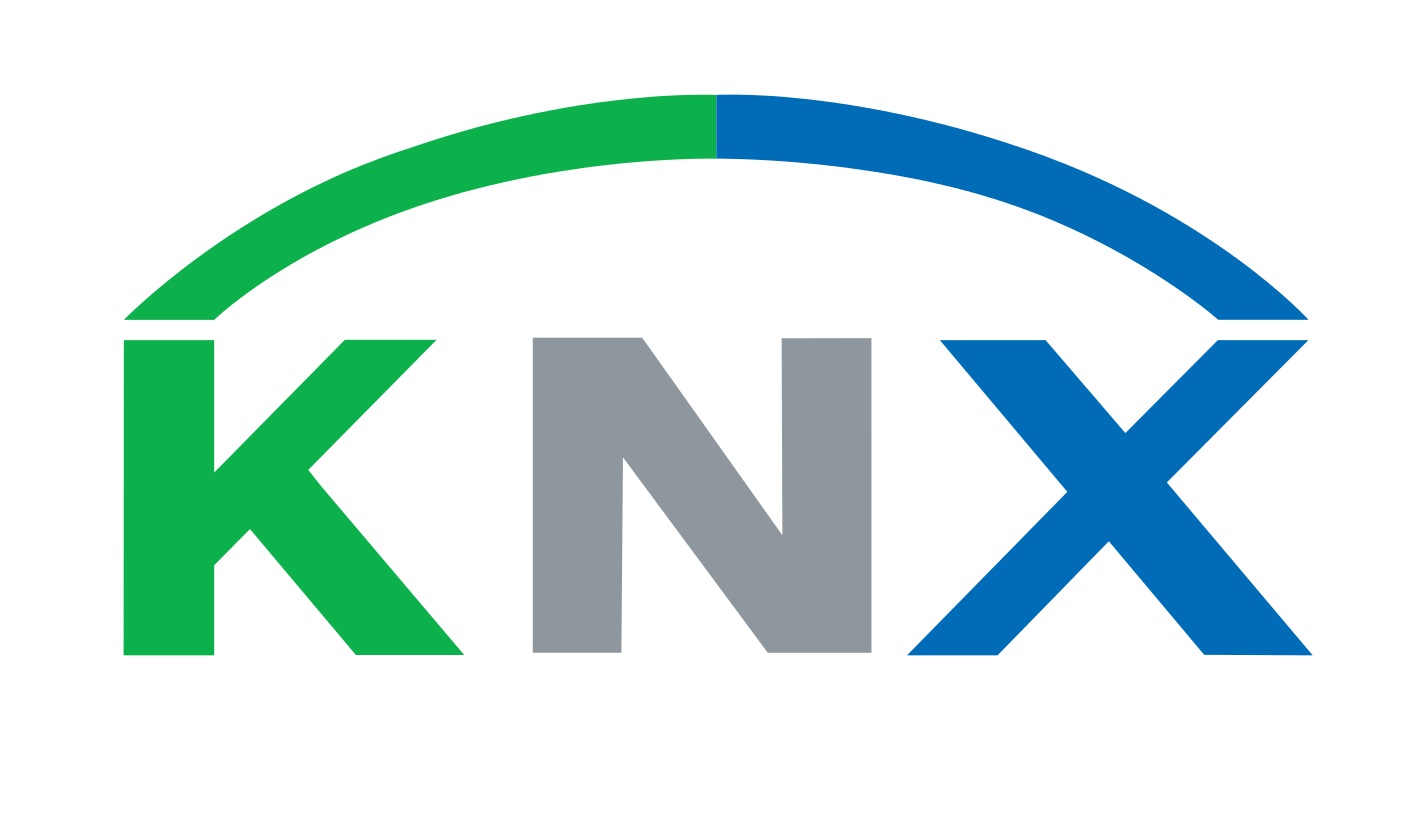All about KNX programming and configuration
Published

Before we get to the KNX Programming we will first focus on KNX. KNX (Konnex) is an open and international standard for building automation. It is a bus system that is used to control and automate building functions such as lighting, heating, air conditioning, blinds, security systems and more. The name "KNX" is derived from "connectivity", which refers to the system's ability to connect different devices and functions in a building.
KNX makes it possible to network different devices and systems in a building with each other, regardless of the manufacturer or type. This means that products from different manufacturers that support the KNX standard can communicate and work together. This enables seamless integration of different building automation systems.
The KNX system consists of various components, including sensors, actuators, switches, operating devices, control units and bus lines. These components are connected to each other via the KNX bus, which is used to exchange data for control and monitoring. This bus can be implemented both wired (using twisted pair cables) and wireless (using radio).
The advantages of KNX include
- Interoperability: Products from different manufacturers can be combined with each other to create a standardized system.
- Flexibility: The system can be easily expanded or modified without the need for major conversions.
- Energy efficiency: KNX enables efficient control of lighting and energy consumption, which can lead to cost savings.
- Convenience: Automated control of various systems improves convenience and the user experience.
- Security: KNX also offers functions for building security, such as the integration of alarm systems.
Overall, KNX is an important technology in the field of building automation that contributes to improving the energy efficiency, comfort and safety of buildings.
How does KNX work?
KNX (Konnex) works as a bus system for building automation based on a decentralized and hierarchical structure. Here is a basic explanation of how KNX works:
- Components: A KNX system consists of various components such as sensors, actuators, switches, operating devices and controllers. These components can perform various tasks such as lighting control, heating control, blind control, alarm systems and more.
- KNX bus: The various KNX components are connected to each other via a special communication bus. This bus enables the exchange of data and commands between the components. The bus can be wired (via twisted pair cable) or wireless (via radio).
- Telegrams: Communication in the KNX system takes place via telegrams. A telegram is a data message that can be sent by a component and received by other components. There are different types of telegrams, such as control telegrams, status telegrams and more.
- Addressing: Each KNX component has a unique address that can be used to identify it. This address can range from 0 to 65535 and is used to address the components. A group address can also be assigned to several components to enable group actions.
- Topology: KNX supports various bus topologies such as line, star and tree structure. This enables a flexible installation in which the components can be arranged according to the requirements of the building.
- Routing and forwarding: In larger KNX installations, so-called routing components can be used to forward telegrams between different parts of the system. This allows larger distances to be bridged without the need for a direct connection between the components.
- Programming and configuration: The KNX system is configured and programmed using special software. Installers and system integrators can use this software to define the functions of the components, their behavior and interactions.
- Interaction: The components in the KNX system can interact in various ways. For example, a motion sensor can send a control telegram when it detects that someone is entering the room. An actuator receives this telegram and switches the lighting on.
Overall, the KNX system enables seamless communication and control of various building functions via a common bus, regardless of the manufacturer and type of components. This results in efficient building automation that improves comfort, energy efficiency and security.
Is KNX programmable?
Yes, KNX is programmable. KNX programming refers to the configuration and control of the various components and functions in the KNX system. This is usually done using special software that makes it possible to define the behavior of the components, program interactions and create automations.
Here are some important aspects of programming KNX:
- Settings and parameters: Each KNX component has certain settings and parameters that need to be defined. This can include the group addresses, threshold values, time settings, delays and more. These settings are normally made via the programming software.
- Links and scenes: KNX enables the creation of links between different components. This means that actions can be triggered based on certain events or states. For example, a motion detector could switch on the lighting when it detects movement. This is often referred to as "linking".
- Automation: The programming software allows complex automation to be created. These could include, for example, lowering the heating temperature when no one is in the room or automatically closing the blinds at sunset.
- Schedules: KNX makes it possible to create schedules that trigger certain actions at predefined times or days. This can be used for lighting control, heating control and other applications.
- Operating devices: The programming software enables the configuration of operating devices that allow the user to control the KNX system manually. These can be wall switches, touch panels or mobile apps.
- Diagnostics and monitoring: The programming software often also offers diagnostic and monitoring functions with which problems in the KNX system can be identified and rectified.
The exact procedure and available functions may vary depending on the KNX software used. Installers, system integrators or building automation experts are usually responsible for programming and configuring KNX systems to ensure that the system meets the requirements of the building and its occupants.
What prior knowledge is required to learn KNX?
In order to learn KNX and be successful in programming and configuring KNX systems, some prior knowledge in the following areas is advantageous:
- Basic understanding of building technology: A basic understanding of electrical installations, lighting systems, heating and air conditioning systems and general building technologies is important as KNX will be integrated into these systems.
- Electrical engineering A basic understanding of electrical engineering, electrical circuits and wiring is helpful, as KNX components are integrated into electrical systems.
- Programming basics: A basic knowledge of programming concepts and logic is an advantage, as the programming of KNX components involves the creation of links, automations and scenes.
- Data technology: An understanding of data transmission, network protocols and communication is important, as KNX is a bus system in which data is exchanged between different components.
- Technical understanding: A general technical understanding and the ability to understand technical documentation and instructions are important in order to use the configuration and programming software effectively.
- Knowledge of KNX systems: A thorough understanding of the KNX architecture, components, topologies and how the system works is essential.
- Experience in building automation: Experience or knowledge of building automation in general can help you understand the requirements and objectives of KNX systems.
It is important to note that KNX is a specialized technology and requires a certain learning curve. There are trainings, courses and certifications specifically aimed at introducing people to the world of KNX. These training courses can be offered by organizations and certification bodies that work with KNX.
If you are interested in learning KNX, I recommend you start with basic courses that will teach you the fundamental concepts and principles. From there, you can further develop your skills and gain practical experience.
Which companies use KNX?
KNX is used by a variety of companies in different industries worldwide. These companies can be manufacturers of building technology products, integrators of building automation systems, installation companies and even end users. Here are some examples of companies that use KNX or manufacture KNX-compatible products:
- ABB ABB is a global technology group that also manufactures KNX-compatible products for building automation.
- Siemens Siemens is a well-known multinational corporation that offers a wide range of KNX-enabled products and systems for building automation.
- Schneider Electric Schneider Electric is a company that offers solutions for energy management and automation, including KNX-compatible products.
- Hager Hager is a company that specializes in electrical installation and building automation and offers KNX products.
- JUNG: JUNG is a manufacturer of switch systems and building technology products, including KNX-compatible solutions.
- Gira Gira is a company that manufactures products for electrical installation and building technology, including KNX systems.
- Merten: Merten is a company that offers electrical installation systems that support the KNX standard.
- Legrand: Legrand is a globally active company in the field of electrical engineering and building technology, which also produces KNX-compatible products.
- Beckhoff: Beckhoff Automation offers automation and control solutions that can also be integrated with the KNX standard.
- Eaton: Eaton is a company that manufactures products for energy management and building automation and offers KNX solutions.
- Somfy Somfy is known for its drive systems for roller shutters and sun protection. The company also offers KNX-compatible solutions.
- Bosch Bosch offers building technology solutions that are also based on KNX to automate various functions.
This list is by no means exhaustive, as there are many other companies that use KNX technology or manufacture products that are compatible with the KNX standard. KNX has established itself as a widespread standard in building automation and is used by many industry players worldwide.
How much does the installation of KNX components cost?
The cost of KNX can vary greatly depending on several factors, including the size of the project, the number of components required, the features chosen, the brands of components and the geographical region in which the project is being implemented. Here are some general cost considerations related to KNX:
- Component costs: The cost of individual KNX components such as sensors, actuators, operating devices and switches can vary greatly depending on the brand, range of functions and quality. Simpler components may be relatively inexpensive, while special or high-quality components may cost more.
- Installation costs: The installation of KNX systems requires electrical cabling and integration of the components. The installation costs can vary depending on the complexity of the project and the installer's working time.
- Programming and configuration costs: Programming and configuring KNX requires specialized knowledge. These services could be provided by installers or system integrators, which leads to additional costs.
- Software costs: The software for programming and configuring KNX systems may be subject to a charge. These costs may vary depending on the software used.
- License costs: KNX is an open standard, but some manufacturers may charge license fees for the use of KNX in their products. This could have an impact on the final price of the products.
- Maintenance and support: For larger projects, long-term maintenance and support contracts may be required to maintain the functionality and performance of the KNX system.
- Scalability: The cost of a KNX project can depend heavily on its scalability. Depending on how many components and functions are added, the total cost could vary.
As the cost of KNX is highly dependent on individual project specifications, it is advisable to consult professionals or companies experienced in the design, installation and programming of KNX systems. These professionals can give you more accurate estimates and advice based on your specific requirements.








